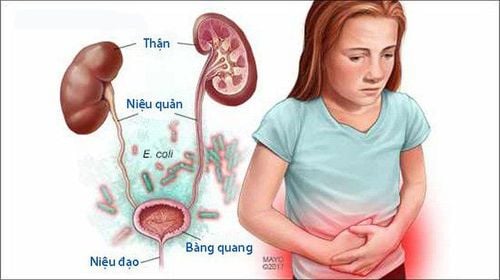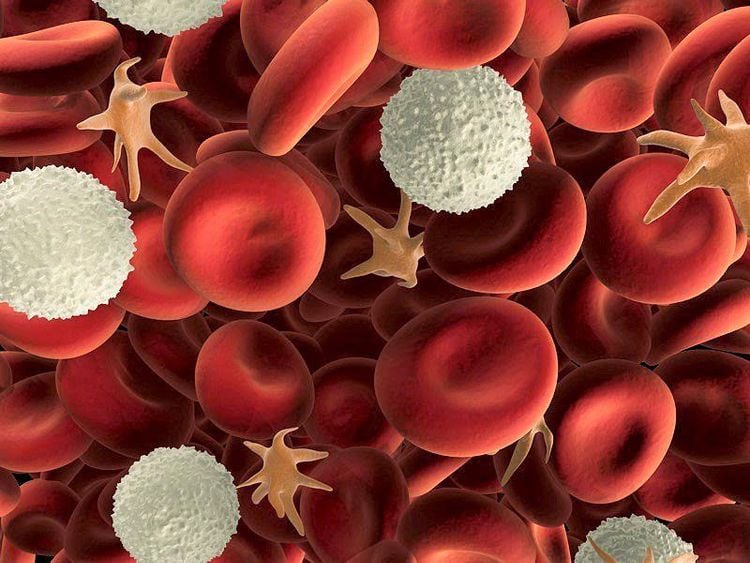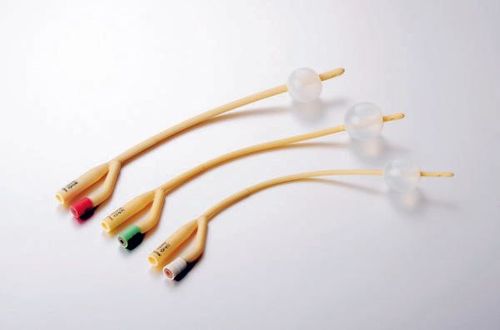This is an automatically translated article.
The article is expertly consulted by Mr. Dr. Tran Thanh Hung - General Surgery Department - Vinmec Ha Long International General HospitalUrinary tract infections are one of the most common medical infections. In particular, urinary tract infections in catheterized patients are often difficult to control because they do not show many clinical symptoms, especially in cases of urinary tract infections caused by urinary catheterization after surgery.
1. What is a urinary tract infection?
Urinary tract infection is one of the common bacterial infections in medicine. According to many statistics among people who have had at least one catheterization lasting from a few hours to a few days, about 25-40% of hospitalizations are due to urinary tract infections. More than 80% of nosocomial urinary tract infections occur in patients with bladder catheterization.
Urinary tract infections have the potential to lead to serious complications, including sepsis and septic shock, not only affecting the patient's life but also increasing the cost of treatment many times.
Urinary tract infections in catheterized patients are often difficult to control because they do not present many clinical symptoms, especially in cases of urinary tract infections caused by urinary catheterization after surgery. Therefore, the prevention of urinary tract infections plays a very important role for clinicians as well as patients.

2. Risk factors for urinary tract infections
Causes of urinary tract infections are diverse, including bacteria, parasites and viruses, of which the most common are Gram-negative bacteria. Pathogenic microorganisms that enter the urinary tract are directly related to non-sterile catheterization and care for patients with improper catheterization. Pathogens cause disease in 3 main ways:
By direct contact: This is the most common path causing disease with about 90% of the total cases. Bacteria from non-sterile medical instruments and healthcare workers' hands travel upstream from the external environment into the urinary system inside the body. By blood: Although the proportion is low, but if urinary tract infections occur due to bacteria spread by blood, they often have severe disease and high mortality due to bacteremia complications. By lymphatic route: Infections from nearby areas can spread to the urinary system through lymphatic vessels such as the genitals, rectum, and other organs in the pelvic cavity. To prevent urinary tract infections in patients with effective catheterization, it is important to understand the causes and risk factors of the disease. There are many objective and subjective characteristics that increase the likelihood of urinary tract infections such as:
The procedure for placing a urinary catheter is not sterile: Medical staff do not follow well the placement and care of the catheter. urine retention. Pathogenic microorganisms from medical instruments, operator hands or the surrounding environment will easily enter the urinary system. Stagnant and blocked urine: The drainage tube does not bring all the urine out, creating a favorable environment for bacteria to multiply and grow causing urinary tract infections. Urine reflux: Due to inadequate care, often causes urinary tract infections in patients with urinary catheters after surgery. The urinary catheter is left in the body for too long. The risk of urinary tract infection increases with the duration of catheterization. Risk factors come from the patients themselves, such as the elderly, weak, bedridden, having many chronic diseases such as diabetes, kidney failure.

3. Prevention of urinary tract infections in catheterized patients
Successful prevention of urinary tract infections in catheterized patients depends on a combination of different steps:
3.1 Using a urinary catheter correctly
Do not place a urinary catheter arbitrarily. Absolutely follow the doctor's instructions. Consideration when deciding to insert urinary catheters in susceptible patients such as the elderly, immunocompromised and women. The retention time of the urinary catheter should be strictly adhered to, and should not be extended when it is not necessary. It is best to remove the urinary catheter 24 hours after surgery. Urinary catheterization is not routine in all patients for whom surgery is indicated. Patients with neurogenic bladder syndrome should receive intermittent catheterization as an alternative to urinary catheterization. In the case of patients with urinary dysfunction, the option of intermittent catheterization or suprapubic bladder drainage may be considered. An antibiotic-impregnated urinary catheter is a measure that can reduce the incidence of urinary tract infections, although clinical evidence is lacking. Using the smallest size urinary catheter can limit trauma to the urethra and bladder.
3.2 Precautions while conducting urinary catheterization
Absolutely follow the Hand Hygiene regimen as instructed by the medical staff before starting and after the procedure. Instruments must be sterile. After insertion, the urinary catheter must be fixed to the inner thigh in a low position. Minimizing the retention of urinary catheters in the urethra for a long time. Before inserting a urinary catheter into the urethra, it is always necessary to lubricate the tip of the catheter. Lock the urinary catheter system when moving the patient to prevent backflow of urine, increasing the risk of urinary tract infection.3.3 Care for the patient properly after catheterization
Make sure the urine drainage system is always closed. Maintain the circulation of urine flow. Do not allow urine to stagnate due to incomplete drainage or obstruction. Always wear gloves when handling urinary catheters. Routine urinary catheter replacement is not recommended. Urinary tract infections cannot be prevented with systemic antibiotics.
Please dial HOTLINE for more information or register for an appointment HERE. Download MyVinmec app to make appointments faster and to manage your bookings easily.














